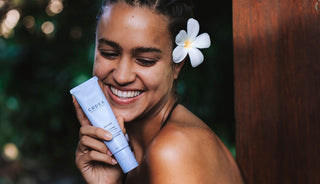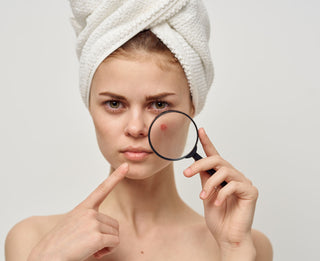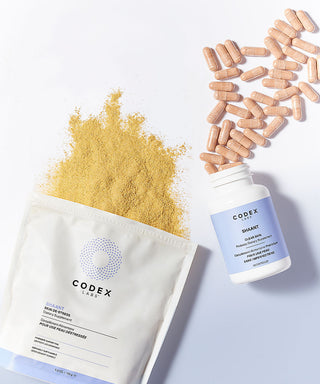How can I tell if Acne is Hormonal or Bacterial?

Subscribe to our mailing list and Save 10% on your next order
Subscribe to our mailing list and save 10% on your next order
Free UK Standard Delivery for Orders over £25
Click & Collect in store
Subscribe to our mailing list and Save 10% on your next order
Subscribe to our mailing list and save 10% on your next order
Free UK Standard Delivery for Orders over £25
Click & Collect in store
Signup to our newsletter and get 10% off your next purchase
By completing this form, you are signing up to receive our emails and can unsubscribe at any time
Learn about the triggers, from hormonal fluctuations to bacterial overgrowth, and discover management strategies that include diet, lifestyle changes, and the Shaant collection developed by Codex Labs, the management system for oily and acne prone skin. Including supplements to target the underlying causes of acne, offering a holistic approach to clearer skin, find out how to tailor your skincare routine for optimal results with Shaant's formulations.
READ ALSO: Sustainability with Barbara Paldus, Founder of Codex Beauty Labs
Acne develops when sebum and dead skin cells plug hair follicles. Bacteria (Cutibacterium acnes) can trigger inflammation resulting in more severe acne.
Hormonal acne is influenced by hormonal imbalances in your body. Hormonal acne is most common during puberty, menstruation, pregnancy, and menopause and is caused by excess androgens of stress hormones increasing sebum production and thereby increasing the possibility of C. acnes colonization.
Bacterial acne is caused by an overgrowth of Cutibacterium acnes on the skin in environments where there is excess sebum. It typically presents as whiteheads, blackheads, and pustules which can appear anywhere on the face, back, or chest.
READ ALSO: Acne Awareness Month: Treat & Prevent Acne
Hormonal acne typically appears on the jaw, chin, neck, and upper back as pimples, blackheads, and whiteheads. Hormonal acne appears in puberty during hormonal shifts, monthly during the menstrual cycle, during the early and late stages or pregnancy, and at the onset of menopause. Hormonal acne can also be triggered by elevated cortisol levels from stress.
Bacterial acne typically presents as whiteheads, blackheads, and pustules which can appear anywhere on the face, back, or chest. Unlike hormonal acne, bacterial acne may be more responsive to topical treatments targeting the underlying bacterial growth.
A diet high in sugar, processed foods, and/or fats will induce gut inflammation that then manifests in general inflammation. This general inflammation can then induce over-production of sebum in hair follicles or cell death at the exit of hair follicles, resulting in a plugged, sebum-filled pore which is the ideal environment for the rapid multiplication of C. acnes bacteria and the formulation of pimples.
The Codex Labs Shaant ClearSkin Probiotic has a patent pending formulation that has been recently clinical evaluated and shown to reduce bacterial acne lesions by 58% over 8 weeks of use. Why is it so effective? It has a blend of the three following bacterial genera known to reduce gut inflammation.
The Codex Labs Shaant Skin Destress Supplement has a patent pending formulation that has been recently clinical evaluated and shown to reduce hormonal acne lesions by 61% over 8 weeks of use. Why is it so effective? It has a blend of four ayurvedic plants and four dietary supplements that target hormonal imbalance and inflammation.
The supplements are a 90-day treatment for acne: ClearSkin Probiotic for bacterial acne and De-Stress Powder for hormonal acne. They should be complemented with our Shaant Pore Purifying Face Scrub or Shaant Hydrating Body Scrub to clear excess sebum and help treat comedones (blackheads/whiteheads) and with our Spot Hero Blemish Gel to resolve inflammatory lesions (pimples).
In general, the Shaant Refining Toner is a great additional to this routine because it helps keeps pores clean and closed. For those with adult acne who are worried about scarring, our Balancing Oil Control Cream with 1% bakuchiol (a plant-based retinol) is an ideal addon, to be used every other or every three days. Once the acne is cleared, the face scrub can be replaced with the Balancing Foaming Cleanser to keep excess oiliness at bay but be gentle on the skin barrier. The cleanser can also be used to remove make-up.




